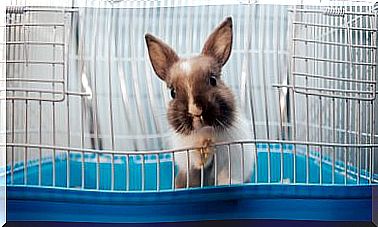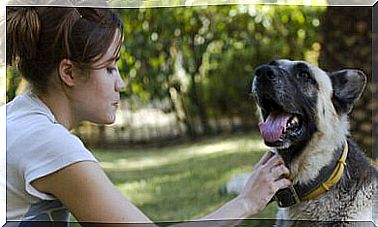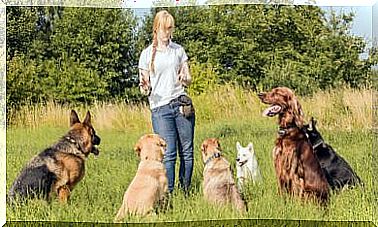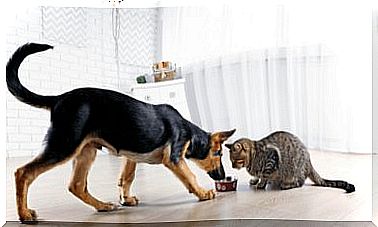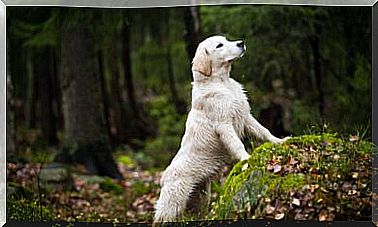What Is The Dwarf Rabbit Like?
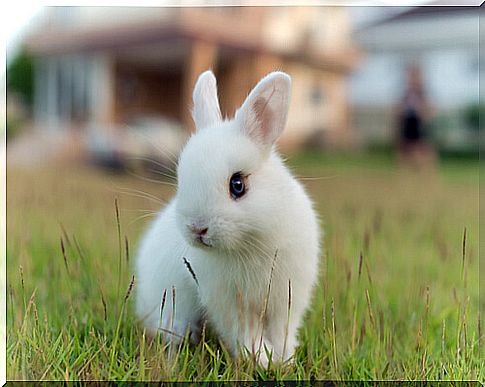
In recent years, dwarf rabbits have regained enormous popularity as pets. Due to their small size, adorable appearance and docile nature, these animals are currently among the favorite companions of children.
Next, we will know a little more about dwarf rabbits, their characteristics, behavior, and the care they require to have a healthy appearance.
Why are there dwarf rabbits?
While their size may seem charming, dwarf rabbits suffer from a malfunctioning pituitary gland. For this reason, your body is unable to produce the proper amount of growth hormone. Among the consequences of this is the inability to acquire the proper size of their ‘standard’ breed.
According to the official definition of the ASNAC (National Association of Family Rabbits), these rabbits are not ‘dwarfs’ only because of their small size. In fact, the name is due to the fact that these rodents present characteristic symptoms of dwarfism.
Dwarf rabbit breeds
Currently there are various breeds of dwarf rabbits that can be kept as a pet. Due to its own characteristics, each breed requires specific care to maintain good health and balanced behavior.
If we are about to adopt one of these animals, it is important to know each of these characteristics well, before choosing the ideal pet for your family.
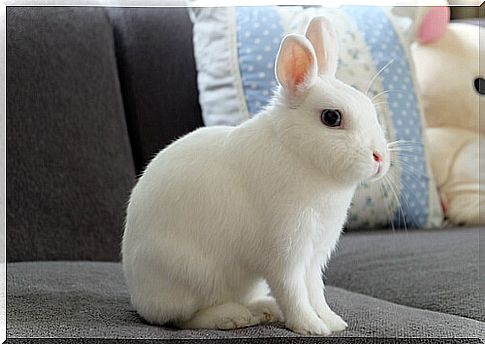
Next, we will see the most popular dwarf rabbit breeds as pets:
- Holland lop
- Dwarf dutch
- American fuzzy lop
- Dwarf angora
- Teddy dwerg
- Polish
- Mini rex
- Mini lop
- Lionhead
- Woolly sweater
- Britannia petit
- Dwarf hotot
- Cashmere lop mini
Physical characteristics of the dwarf rabbit
Dwarf rabbits were first developed in the Netherlands, during the early 20th century. It is estimated that they originated after crosses between a small wild rabbit with some domestic breeds. However, the appearance and colors that we know today is the result of a selection and standardization process carried out in England.
In practice, its most striking physical characteristic is its small size. When they reach adulthood, these rodents can measure between 30 and 50 centimeters. The body weight of an adult specimen varies between 0.8 and 1.5 kilos; Their rounded and short ears and their small flat nose also stand out.
Its compact body is covered by a soft and short coat, which can display different colors. Currently, white, black, brown, reddish and gray dwarf rabbits are known.
Behavior of the dwarf rabbit
Dwarf rabbits are very clean animals that spend several hours grooming themselves and their environment. Therefore, it is essential to provide a clean, orderly and properly conditioned environment for your pet. And when you observe that your rabbit stops grooming, it is advisable to take him to the vet, as this can be a sign of illness.
Although docile in nature, these tiny rabbits are often less sociable than normal-sized rabbits. This does not mean that they are more aggressive or less intelligent than large rabbits, but that their body is more sensitive, and they tend to be more shy and reserved than other rabbits.

Since dwarf breeds are naturally more fearful, they require more attention with their upbringing and socialization. If we want our dwarf rabbit to overcome fear, we will have to progressively accustom him to our presence and the routine of the home.
To invite him to come out of his cage and play, we can attract him with a treat. Afterwards, we will let the little rodent get used to its environment and explore it out of its own curiosity. We should never force him to do something he does not want, since this generates stress and can promote the development of aggressive behaviors.
With positive reinforcement, we will make a dwarf rabbit more friendly and want to share the environment with the family. In addition, it will be essential to make children aware of the sensitivity of this animal, for which they are explained how to play carefully, without hurting them.
Responsibility when adopting
You have to remember that, unfortunately, it is still common to find misleading advertisements for ‘dwarf rabbits’, which are actually prematurely weaned common rabbits . In addition to being a consumer scam, this is extremely detrimental to the animal’s health.
Prematurely weaned animals present difficulties in their physical, cognitive, emotional and social development. As a consequence, they may show learning difficulties, behavioral and health problems.
To adopt one of these small animals, it is best to turn to professional breeders or animal shelters. In these places we will get the best information.


